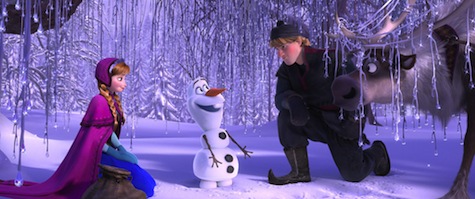In the 1980s, Disney’s imagination was growing stale. During the era of Walt himself, classics such as Cinderella, Pinocchio, and Peter Pan had made Disney the most respected animation company in the world. But its newer movies—titles such as The Great Mouse Detective and Oliver and Company—seemed to lack the timeless magic of those earlier ones. The company’s theme parks, though profitable, relied heavily on aging characters. And while Disney was still a brand to be reckoned with, it needed to do some serious wishing-upon-a-star when it came to new content.
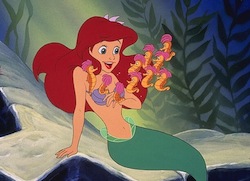 The return to glory began under the sea. In 1989, The Little Mermaid splashed into the mainstream, and not just because of its dazzling underwater animation. Nearly every Disney movie had included a trademark song or two, but The Little Mermaid was a full-on musical, complete with calypso ensembles and a touching teenage solos. The soundtrack went on to win two Academy Awards: one for Best Score and one for Best Song, with two of its songs competing against each other (“Under the Sea” and “Kiss the Girl.”) So began the era of the Disney musical.
The return to glory began under the sea. In 1989, The Little Mermaid splashed into the mainstream, and not just because of its dazzling underwater animation. Nearly every Disney movie had included a trademark song or two, but The Little Mermaid was a full-on musical, complete with calypso ensembles and a touching teenage solos. The soundtrack went on to win two Academy Awards: one for Best Score and one for Best Song, with two of its songs competing against each other (“Under the Sea” and “Kiss the Girl.”) So began the era of the Disney musical.
The enchantment continued with 1991’s Beauty and the Beast, Disney’s most beautifully-animated film yet. Not only did the movie earn the same two Oscars as The Little Mermaid, it made twice as much money and became the first animated film to be nominated for Best Picture. (It lost to The Silence of the Lambs.) In 1992, Aladdin did even better at the box office and again won the Oscars for Best Song and Best Score. Observers began to wonder if Disney might just have a magic lamp up its sleeve after all.
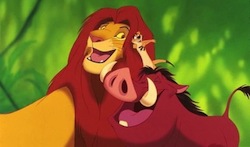 But the coup de grace was 1994’s The Lion King, a Shakespearean drama set in the heart of the African pridelands. Not only did Elton John’s soulful score win two Oscars (this time with three songs competing against each other for Best Song), the movie inspired a hugely-successful Broadway show, won the Golden Globe for Best Picture (Musical/Comedy), and remains the highest-grossing traditionally-animated film ever made. If there had been any lingering doubt, Disney was now the undisputed king of the jungle.
But the coup de grace was 1994’s The Lion King, a Shakespearean drama set in the heart of the African pridelands. Not only did Elton John’s soulful score win two Oscars (this time with three songs competing against each other for Best Song), the movie inspired a hugely-successful Broadway show, won the Golden Globe for Best Picture (Musical/Comedy), and remains the highest-grossing traditionally-animated film ever made. If there had been any lingering doubt, Disney was now the undisputed king of the jungle.
But like a brilliant firework that fades and disappears, Disney’s comeback was short-lived. The next four animated films (Pocohontas, The Hunchback of Notre Dame, Hercules, and Mulan) each made a smaller splash at the box office, and none of them nabbed a coveted golden statue. Insiders whispered that the glory days were over; high-ranking Disney creatives began to jump ship. By the time Tarzan hit theaters in 1999, the landscape at Disney had totally changed, and despite an Oscar win for Phil Collins’ score, Tarzan marked the end of Disney’s musical years. (They tried once more, with Home on the Range, and failed abysmally.)
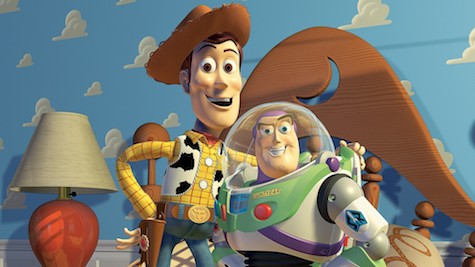
Meanwhile, an animation revolution was taking place just outside of San Francisco. Pixar Animation Studios, whose hit film Toy Story had launched computer graphics into the mainstream, quickly came to replace Disney as the world’s top animation company. The studio’s hit movies such as Monsters Inc., Finding Nemo, and The Incredibles made Pixar known for the very things that once defined Disney: great stories, lovable characters, and dazzling, colorful animation. But these movies notably did not include musical numbers. As other companies began imitating the Pixar model (one of those imitators being Disney itself, who soon claimed traditional animation was dead), music disappeared off the map entirely.
By 2006, you might have guessed the animated musical was dead. But that year, Disney’s new CEO Bob Iger announced that Disney (which distributed Pixar’s films) was going to buy Pixar outright. It was a huge hullaballo: not only was he buying Pixar’s movie franchises, he was also buying its creative leadership, who would now double as the heads of Disney Animation. In essence, Bob Iger spent $7.4 billion dollars to buy back Disney’s mojo and pave the way for his animation department’s gradual return to glory.
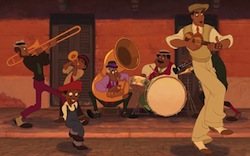 And within a few years, Disney got its groove back. In 2009, The Princess and the Frog marked the return of traditional animation and of musical numbers; the movie wasn’t quite up to the standard of the early 90s, but it still received widespread praise. In 2011, the CG movie Tangled became Disney’s most successful film since The Lion King, and in 2012, Wreck-It-Ralph proved that Disney could develop great stories that didn’t star princes and princesses. Even though Pixar movies were still much more popular (almost every new attraction at the theme parks these days is Pixar-themed), Disney was once again back in the game.
And within a few years, Disney got its groove back. In 2009, The Princess and the Frog marked the return of traditional animation and of musical numbers; the movie wasn’t quite up to the standard of the early 90s, but it still received widespread praise. In 2011, the CG movie Tangled became Disney’s most successful film since The Lion King, and in 2012, Wreck-It-Ralph proved that Disney could develop great stories that didn’t star princes and princesses. Even though Pixar movies were still much more popular (almost every new attraction at the theme parks these days is Pixar-themed), Disney was once again back in the game.
But there was still one thing that no company had yet done: produce an original, computer-animated musical in the style of those 1990s classics. (Tangled was a musical, but its unconventional folk rock score made it more of an experiment than a return to Disney’s roots.) As a rule, Pixar still mostly avoided musical numbers, and the closest any other company had come was Animal Logic with its jukebox-style Happy Feet. If Disney had a destiny, it would have to be bringing together the heart-lifting song-and-dance of the 90s with the computer animation techniques of the post-Pixar era. Sooner or later, the day would come. The only question was when.
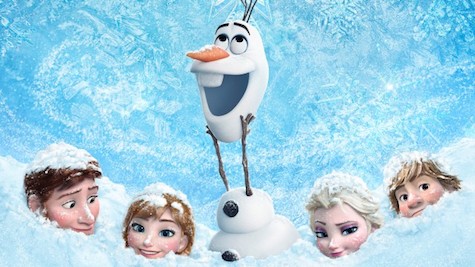
Which brings us to Thanksgiving 2013, and the release of Disney’s Frozen. Frozen is the story of two princesses, one of whom has the power to turn things to snow and ice. When Elsa (the magical one) accidentally freezes the entire kingdom, it’s up to Anna to embark on a magical quest to find her sister and save the land from an eternal winter. In short, this is a classic Disney story, rendered with gorgeous Pixar-style computer animation, and filled with Disney-style music harking back to the 1990s.
In a way, Frozen is history come full circle: like The Little Mermaid, the story is based on a tale by Hans Christian Andersen (“The Snow Queen.”) Like The Little Mermaid, Walt Disney himself considered animating the story back in 1943. Like the earlier film, Frozen is a bold new musical with a watery-theme, hitting theaters after what many would call a dark period for Disney. And just like in 1989, the movie has a lot riding on it.
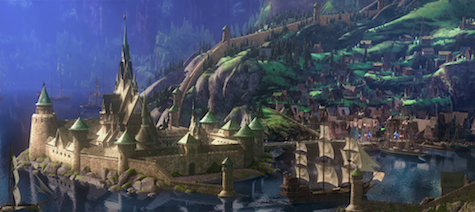
It remains to be seen if Frozen is any good—not to mention whether its heroines are positive role models for little girls, a topic which has darkened the legacy of many of Disney’s princess movies. But the fact that this musical is happening at all is hugely exciting for Disney fans. If it succeeds, Frozen could usher in a new wave of musicals just as The Little Mermaid did in 1989. Like all things Hollywood, it depends on the box office—but with so much at stake for Disney, you can bet that the powers-that-be have been careful to get this fairy tale not too cold and not too hot, but just right.
Personally, I know where I’ll be on Thanksgiving: center seat, center aisle, wearing the 3D glasses. Which is saying a lot given that I’m in my mid-thirties and my daughter’s still too small to go to the movies. There are many kinds of Story World out there—worlds of fantasy, worlds of sci-fi, worlds of animation—but as kids have been learning since 1989, there’s nothing quite as magical as singing your way through a Disney movie.
Brad Kane writes for and about the entertainment industry, focusing on storytelling in movies, TV, games, and more. If you enjoyed this article, you can follow him on Twitter, like Story Worlds on Facebook, or check out his website which archives the Story Worlds series.










